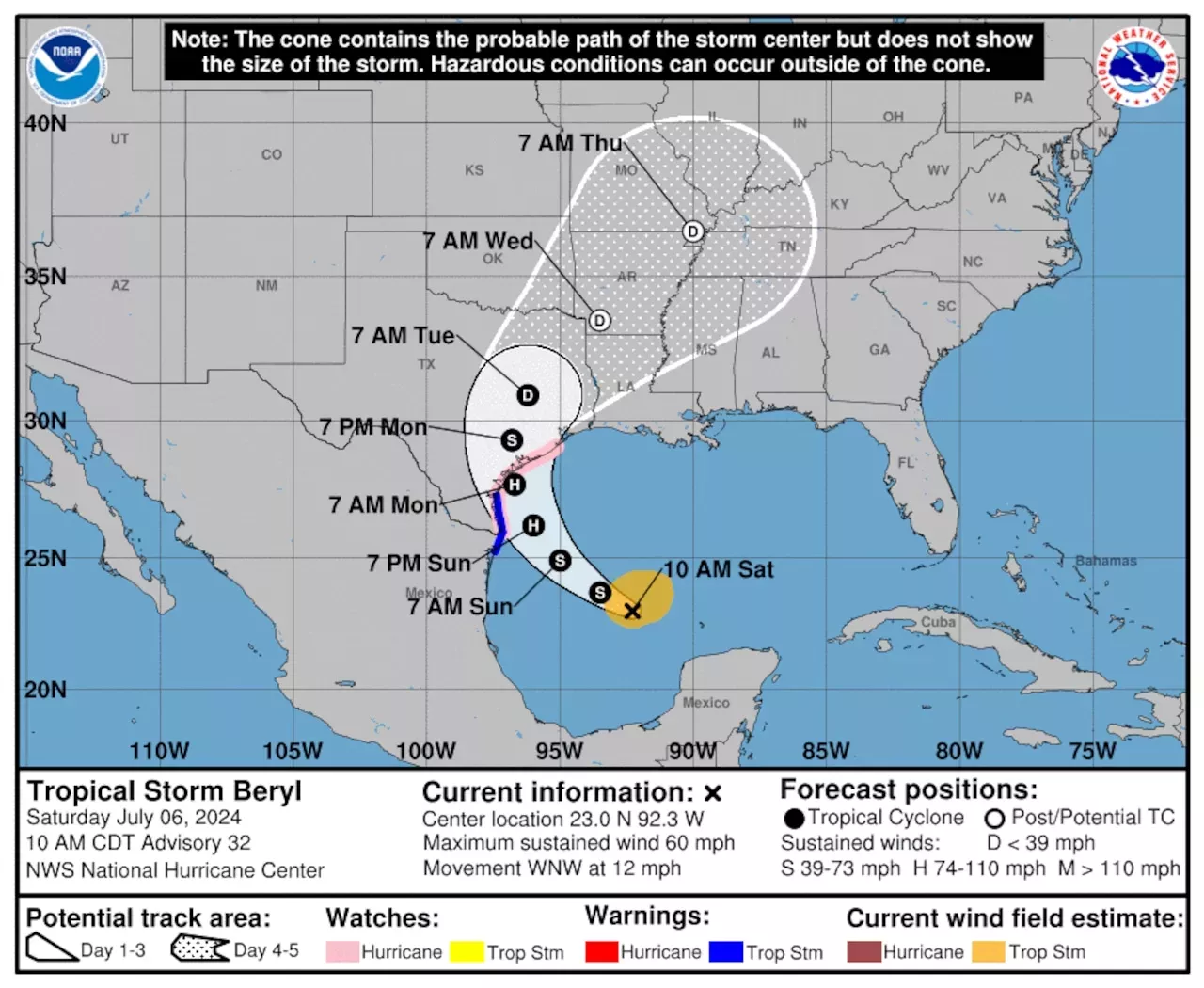Tropical Storm Beryl’s Path and Intensity
![]()
Tropical storm beryl tracker – Tropical Storm Beryl, the second named storm of the 2023 Atlantic hurricane season, has formed over the eastern Atlantic Ocean. The storm is currently located about 1,000 miles east of the Lesser Antilles, and is moving west-northwest at 15 mph.
Keep an eye on the latest updates on Tropical Storm Beryl’s track and intensity. Don’t forget to check out what time is the nate diaz masvidal fight. Stay informed and prepared as the storm approaches.
Beryl is expected to strengthen into a hurricane by the end of the week, and could reach the Lesser Antilles by early next week. The storm’s path is still uncertain, but it could potentially threaten the Caribbean and the United States.
To keep track of Tropical Storm Beryl’s path, you can check reputable weather websites. If you’re interested in a different topic, such as “what time is nate diaz vs masvidal 2”, you can find that information on various sports news websites like this one.
After checking that, you can return to following Tropical Storm Beryl’s progress and stay informed about its potential impact.
Factors Influencing Beryl’s Path and Intensity
Several factors will influence Beryl’s path and intensity, including:
- Atmospheric conditions: The strength and direction of the winds in the atmosphere will help determine Beryl’s path. If the winds are strong and favorable, Beryl could accelerate and move quickly across the Atlantic. However, if the winds are weak or unfavorable, Beryl could slow down or even stall.
- Ocean currents: The ocean currents in the Atlantic Ocean can also affect Beryl’s path. If Beryl moves into a strong current, it could be pushed in a different direction. For example, the Gulf Stream is a strong current that flows north along the east coast of the United States. If Beryl moves into the Gulf Stream, it could be pushed northward towards the United States.
- Land interaction: If Beryl makes landfall, it could weaken as it interacts with the land. Friction from the land can slow down the storm and disrupt its circulation. However, if Beryl makes landfall over warm water, it could actually strengthen.
Potential Impacts of Tropical Storm Beryl

Tropical Storm Beryl poses several potential hazards that could significantly impact affected areas. These include:
Flooding
Heavy rainfall associated with Beryl can cause widespread flooding, particularly in low-lying areas and along rivers and streams. Flooding can damage infrastructure, property, and crops, and can also lead to loss of life. Residents in flood-prone areas should be prepared to evacuate if necessary.
Storm Surge
Storm surge is a rise in sea level caused by strong winds pushing water towards the shore. Storm surge can cause coastal flooding, erosion, and damage to buildings and infrastructure. Residents in coastal areas should be aware of the potential for storm surge and take precautions to protect their property.
High Winds
High winds associated with Beryl can cause significant damage to trees, power lines, and buildings. High winds can also create dangerous conditions for driving and outdoor activities. Residents should secure loose objects and stay indoors during high winds.
Tornadoes
Tornadoes are rotating columns of air that can cause devastating damage. Tornadoes can occur in association with tropical storms and hurricanes. Residents in areas at risk for tornadoes should be prepared to take shelter if necessary.
To prepare for and mitigate the impacts of Tropical Storm Beryl, residents should:
- Develop an evacuation plan and identify safe evacuation routes.
- Gather emergency supplies, including food, water, first-aid kits, and medications.
- Secure loose objects around their property.
- Stay informed about the latest weather forecasts and warnings.
- Follow the instructions of local officials.
Monitoring and Forecasting Tropical Storm Beryl: Tropical Storm Beryl Tracker
Tracking the movement and intensity of tropical storms is crucial for effective preparedness and response. Various methods are employed to monitor and forecast the path and strength of Tropical Storm Beryl.
Satellite Imagery, Tropical storm beryl tracker
- Satellites provide valuable real-time data on the storm’s location, size, and structure.
- Satellite images allow meteorologists to identify features such as cloud patterns, precipitation, and wind speeds.
Radar
- Radar systems detect precipitation and provide information about the storm’s rainfall intensity and distribution.
- Doppler radar can measure wind speeds and directions within the storm, aiding in forecasting its movement.
Weather Balloons
- Weather balloons are released into the atmosphere to collect data on temperature, pressure, and wind speed.
- This information helps meteorologists understand the vertical structure of the storm and predict its future behavior.
Challenges and Limitations
Forecasting tropical storms can be challenging due to their complex nature and the influence of various factors.
- Forecasts can be affected by errors in data collection or interpretation.
- The unpredictable nature of storm behavior can lead to forecast inaccuracies.
Staying Informed
Staying informed about the progress of Tropical Storm Beryl is essential for safety and preparedness.
- Monitor official advisories from the National Hurricane Center (NHC) for the latest updates.
- Use reliable news sources and social media to follow the storm’s track and potential impacts.